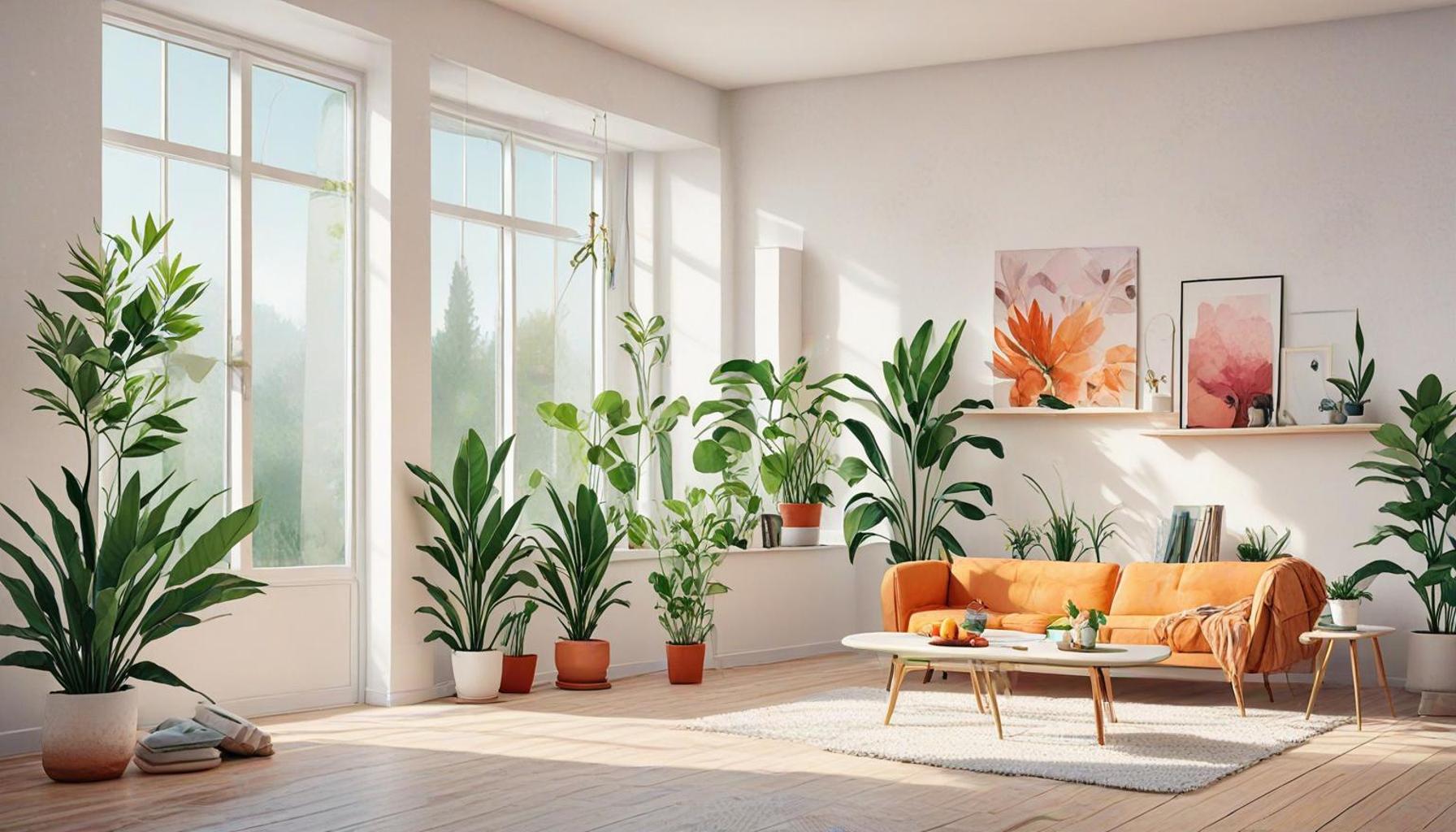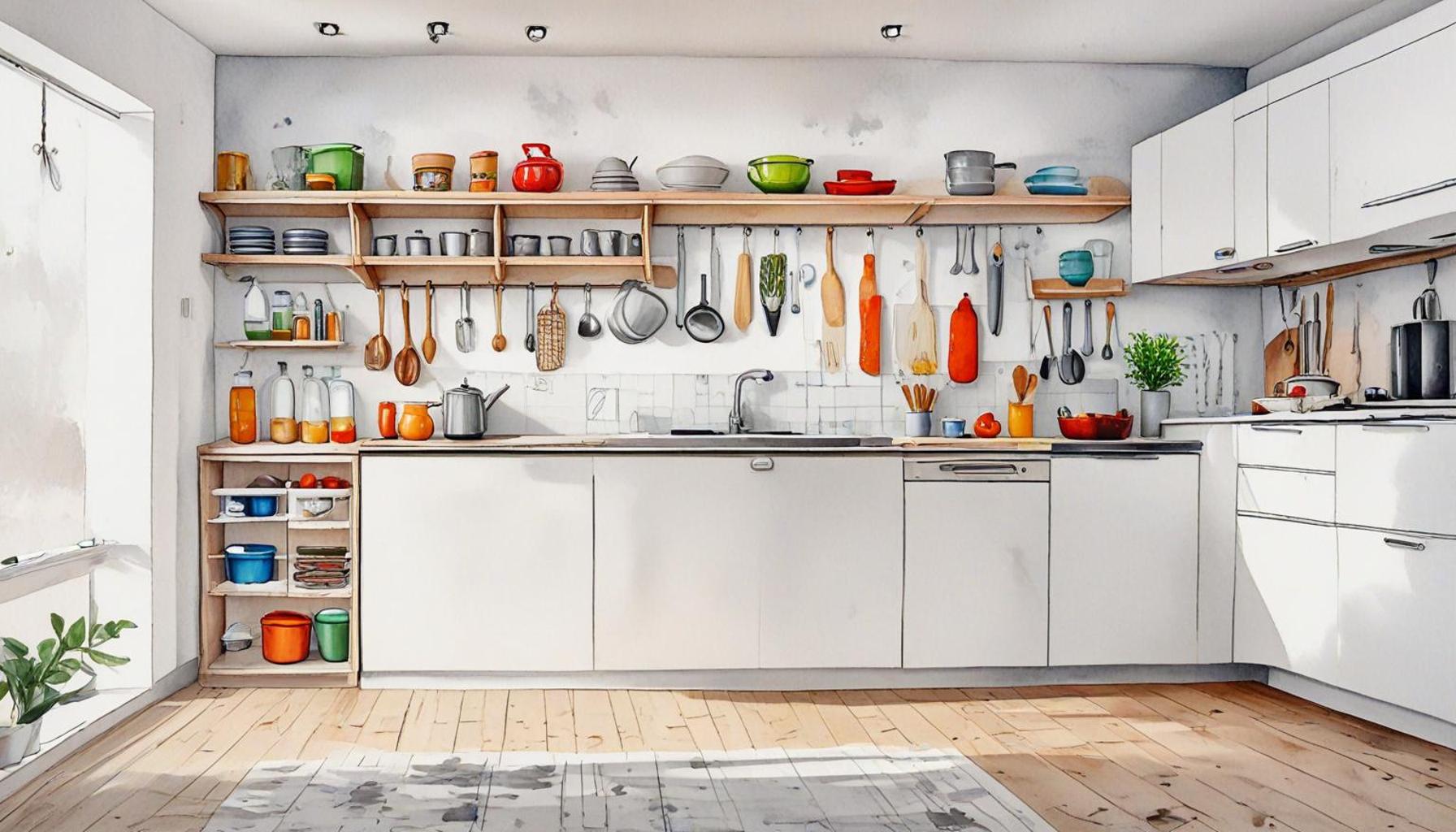How the strategic arrangement of furniture can improve functionality and the feeling of space in minimalist environments

Understanding the Impact of Furniture Arrangement in Minimalist Design
In the realm of interior design, minimalism represents a dedication to simplicity and functionality. By stripping away the unnecessary, minimalism invites a cleaner aesthetic that can significantly enhance the ambiance of a space. One of the crucial elements in achieving this balance is the strategic arrangement of furniture. Proper placement not only elevates the visual experience but also plays a vital role in usability.
Key Considerations for Minimalist Spaces
When arranging furniture in minimalist settings, three fundamental aspects require consideration:
- Decluttering: The first step towards successful minimalism is removing unnecessary items. When surplus possessions are eliminated, the space feels more open and breathable. For instance, consider replacing bulky shelves filled with knick-knacks with streamlined wall-mounted storage. This shift can transform a cramped area into an inviting oasis.
- Multi-functional Furniture: Investing in furniture that serves multiple purposes is a fundamental principle in minimalist design. A stylish sofa bed, for example, not only provides seating but can effortlessly accommodate guests for the night. Foldable tables can expand for dining or contract for daily activities, thereby reducing clutter without sacrificing functionality.
- Traffic Flow: The layout of furniture should facilitate smooth movement throughout the space. While placing a sofa against the wall may conserve space in a small living room, arranging it to create an open conversation area can foster engagement among guests. This thoughtful placement ensures that critical pathways remain clear, promoting an unhindered flow.
The Benefits of Thoughtful Furniture Arrangement
Adopting these strategies in minimalist environments can radically alter the perception of a room. By optimizing the arrangement, one can:
- Enhance productivity and comfort: A well-organized space reduces distractions, allowing for increased focus—ideal for home offices or study areas.
- Draw the eye to key design features: Strategic placement can highlight architectural details or artwork, making them focal points that elevate the overall aesthetic.
- Facilitate better social interaction: An intelligently designed layout encourages conversation and connection, turning a house into a home.
Implementing these suggestions not only enriches the aesthetics of a space but also enhances the experience of those who inhabit it. By exploring the intersection of functionality and design, one can discover how simple adjustments in furniture arrangement can lead to profound transformations in your home or workspace. Engaging with this minimalist philosophy can lead to a more peaceful and organized living environment.
DISCOVER MORE: Click here for actionable tips
Harnessing Space: The Art of Strategic Furniture Arrangement
The arrangement of furniture in minimalist environments transcends mere aesthetics; it is a powerful tool that can significantly enhance both functionality and the perception of space. To effectively achieve this delicate balance, one must delve deeper into specific strategies that prioritize efficiency while creating a welcoming atmosphere.
Utilizing Zones for Enhanced Functionality
One of the key strategies in optimizing furniture arrangement is the creation of defined zones within a space. Zones serve as functional areas that dictate the activities occurring in various parts of a room. By contemplating how each zone is used, homeowners can make informed decisions about furniture placement. Here are a few tips:
- Living Area: Arrange seating to face each other, fostering conversation while keeping the layout open. Positioning a coffee table centrally provides a natural link between seating options, enhancing social interaction.
- Workstations: Designating a specific work area within a room can boost concentration. A small table in a well-lit corner can serve as a productive space, separated visually from the relaxation area by slim bookshelves or soft rugs.
- Dining Spaces: In a compact dining area, a circular table can create a sense of continuity and flow, making it easier for guests to engage with one another while maximizing space. Consider adding collapsible chairs that can be tucked away when not in use.
By intentionally creating zones, the space can boast an organized charm that fosters functionality without cluttering the environment. This layered approach not only organizes the flow of activities but also contributes to an intangible sense of calm, essential in minimalist design.
Emphasizing Vertical Space
In minimalist environments where floor space is often limited, utilizing vertical space becomes crucial. Vertical arrangement of furniture and decor can draw the eye upward, generating a more expansive feel. For instance, hanging shelves or tall, narrow bookcases help utilize wall space effectively, avoiding the cumbersome appearance of large pieces that occupy significant floor space.
In addition, incorporating wall-mounted lighting can brighten rooms while preserving precious tabletop space. Wall sconces or pendant lights can serve as focal points that add depth and intrigue to a room without crowding visual lines.
Balancing Symmetry and Asymmetry
It is also important to consider the role of symmetry in minimalist design. While symmetrical arrangements can create a sense of balance and order, asymmetrical layouts can add an energizing dynamic. By mixing elements, such as pairing a large sofa with smaller, varied seating options, one can promote an appealing visual tension without overwhelming the space.
Ultimately, the strategic arrangement of furniture is about more than just positioning. It involves understanding the nuances of space, exploring the interplay of various elements, and ultimately guiding individuals toward a harmonious living experience. By embracing these principles, anyone can transform their minimalist space into an environment that feels both functional and expansive.
When considering minimalist environments, the strategic arrangement of furniture plays a pivotal role in enhancing both functionality and the sensation of ample space. The core principle of minimalism revolves around simplicity and the elimination of clutter, and this is where furniture placement becomes crucial.
For instance, using multi-functional furniture can dramatically reduce the need for excess items. A sofa bed, for example, serves both as a sitting area and a sleeping solution, allowing you to keep the room open and airy. This not only frees up valuable floor space but also enhances the room’s overall utility.
Additionally, the visual alignment of furniture can create an illusion of greater space. Arranging seating in a way that follows the room’s natural flow or focal points can contribute to a more expansive appearance. For example, facing couches towards a central coffee table can encourage an open dialogue while minimizing separation between areas.
Moreover, keeping furniture off walls instead of pushing everything to the perimeter creates a more inviting atmosphere and offers a chance for natural light to permeate the room. This design choice fosters an illusion of greater depth and space, making the environment feel larger than it actually is.
In the realm of minimalist designs, carefully chosen colors and materials of furniture can also affect the perceived space. Light-toned woods and transparent materials like glass can create an airy feel, contributing significantly to the minimalist aesthetic. Coupling these styles with a conscious plan for arrangement can yield impressive results in terms of functionality and space perception.
Ultimately, a thoughtfully arranged furniture layout not only meets everyday needs but can also transform the emotional experience of a room, making it a serene sanctuary. The insights gained from effective furniture placement can lead homeowners to re-envision their spaces, making the most of a minimalist approach.
| Advantages | Details |
|---|---|
| Enhanced Functionality | Multi-functional furniture reduces clutter and increases utility. |
| Improved Spatial Illusion | Careful arrangement can maximize light and create an airy atmosphere. |
DISCOVER MORE: Click here for expert tips on maximizing small spaces
Streamlining Functionality: Movement and Flow
When considering the strategic arrangement of furniture in minimalist environments, one may overlook the importance of movement and flow. A well-planned layout can significantly enhance the ease with which individuals traverse a space. In a minimalist setting, where every piece must earn its place, ensuring that the arrangement does not obstruct natural pathways is essential.
The Importance of Clear Pathways
Clear pathways allow for effortless movement throughout a room, minimizing the risk of clutter and disorganization. The typical recommendation is to maintain a minimum of three feet of space in main pathways, which enables comfortable flow and encourages interaction among zones. For instance, in a living room, arranging the sofa and chairs far enough apart can facilitate movement while allowing for conversation without straining. This not only makes the area more accessible but contributes to a spacious feel, as open pathways visually expand the area.
Multipurpose Furniture: Maximizing Utility
In minimalist environments, multipurpose furniture plays a vital role in enhancing both aesthetics and functionality. Selecting furniture that serves more than one purpose can minimize the need for additional pieces, which can ultimately lead to a cluttered appearance. For example, a sleek ottoman can double as both a seating option and a storage solution for books or blankets. Such versatility allows for better space management and also offers homeowners the chance to refresh the look of their space without significant investments.
The modern trend of using foldable and extendable furniture is gaining traction in the United States as more individuals live in smaller homes or apartments. A dining table that expands for gatherings and collapses to maximize floor space is a perfect example of how functionality can seamlessly blend with minimalism.
Incorporating Light and Color
Another facet of furniture arrangement that influences the feeling of space is the interplay of light and color. The choice of furniture finishes and colors can either expand or confine a room’s appearance. Lighter shades, such as whites, creams, and soft pastels, evoke a sense of openness and airiness. Pairing this with reflective surfaces, like glass or polished metal, creates an illusion of depth, making spaces feel larger while enhancing natural light.
Arranging furniture in a way that allows light to pass through can amplify this effect. For example, placing larger furniture pieces against walls rather than in the center of a room opens up space for movement and lets light fill the room, creating an uplifting atmosphere. Strategically positioning mirrors across from windows or light sources can also double the illumination and visually enlarge the area.
Focal Points: Creating Visual Interest
Establishing focal points in minimalist environments is vital for directing attention without overwhelming decor. Often, a single statement piece, such as an artistic chair or a unique table, serves as an anchor in a well-structured space. By drawing the eye to these elements, the overall arrangement can appear deliberate and thoughtfully curated rather than just sparse.
Moreover, a well-placed rug can delineate an area, further drawing focus and connecting disparate zones within an open floor plan. Such intentionality within furniture arrangement can lead to an environment that feels both spacious and welcoming, allowing occupants to enjoy their space in harmony.
DISCOVER MORE: Click here for space-saving tips
Conclusion: Harmonizing Functionality and Aesthetics
In the realm of minimalist design, where simplicity reigns, strategic furniture arrangement emerges as a crucial element that can dramatically improve both functionality and the feeling of space. By prioritizing clear pathways, homeowners can facilitate natural movement, ensuring each area feels open and accessible. The thoughtful placement of multipurpose furniture not only reduces clutter but also maximizes utility, transforming each piece into a value add rather than a hindrance.
Moreover, incorporating principles of light and color into the arrangement can breathe life into minimalist spaces, leveraging lighter hues and reflective materials to create an illusion of expanse, while skilled furniture placement allows for the optimum flow of natural light. Focusing on creating intentional focal points helps draw attention to unique design elements, fostering interest without compromising the minimalist ethos.
Ultimately, the art of arranging furniture in minimalist environments transcends mere aesthetics; it cultivates an atmosphere that balances both form and function. Each consideration in layout, from ensuring movement is unobstructed to embracing multi-use solutions, is an invitation for residents and guests alike to experience a sense of serenity and openness. As urban living spaces continue to shrink in the United States, embracing the strategies discussed here will become increasingly vital for achieving harmonious, inviting homes that exemplify the true essence of minimalism.


